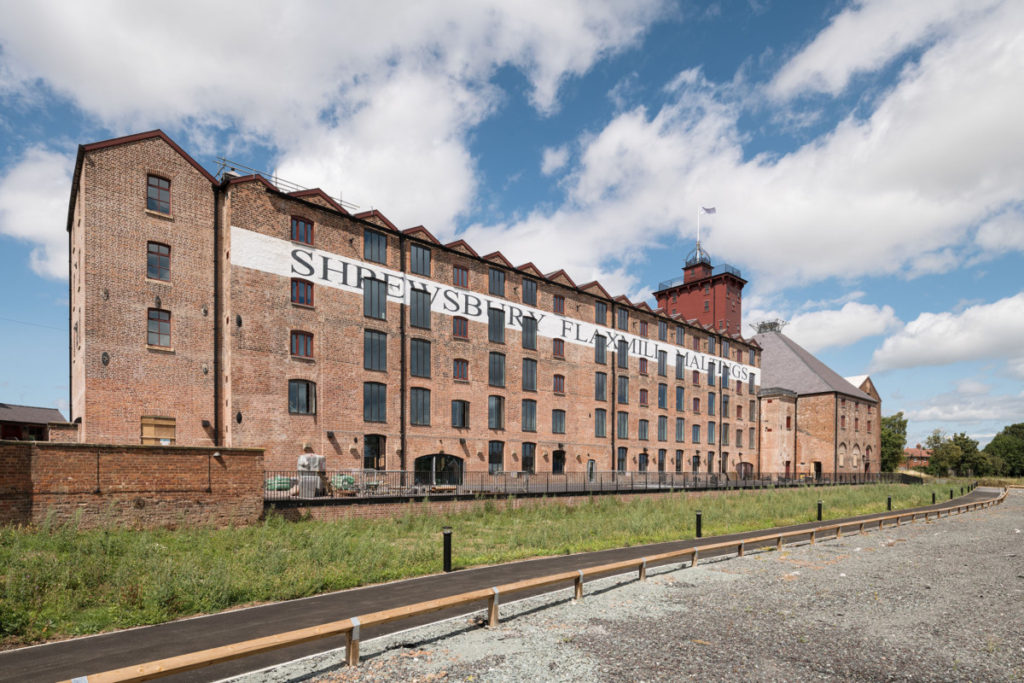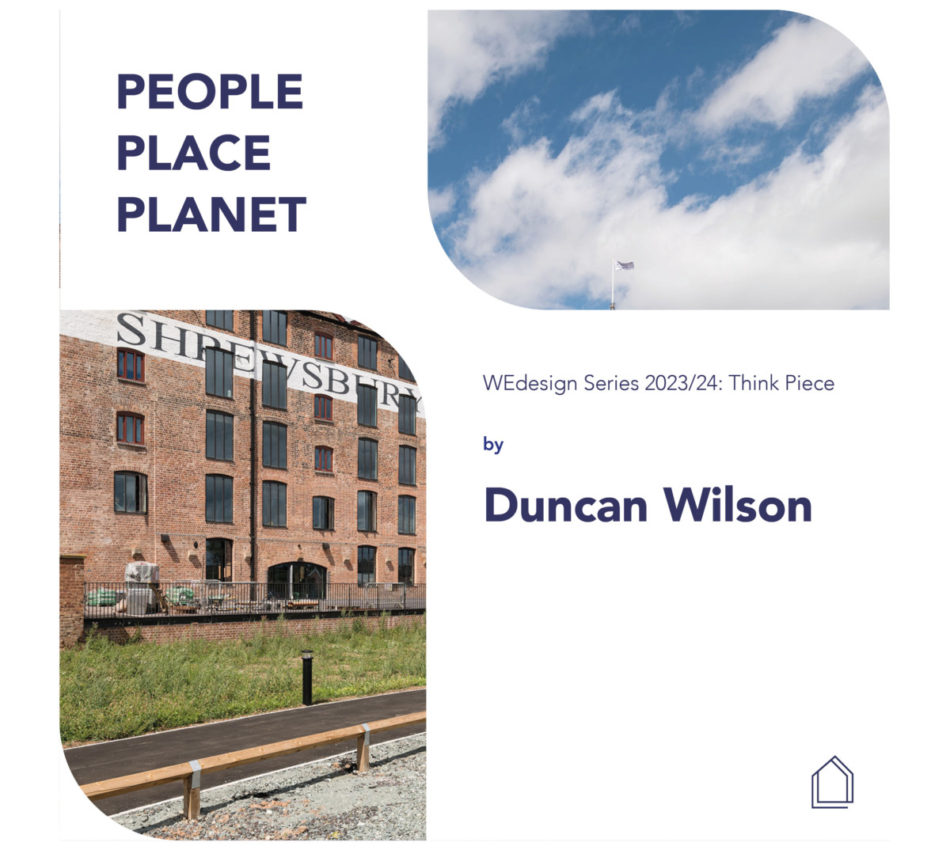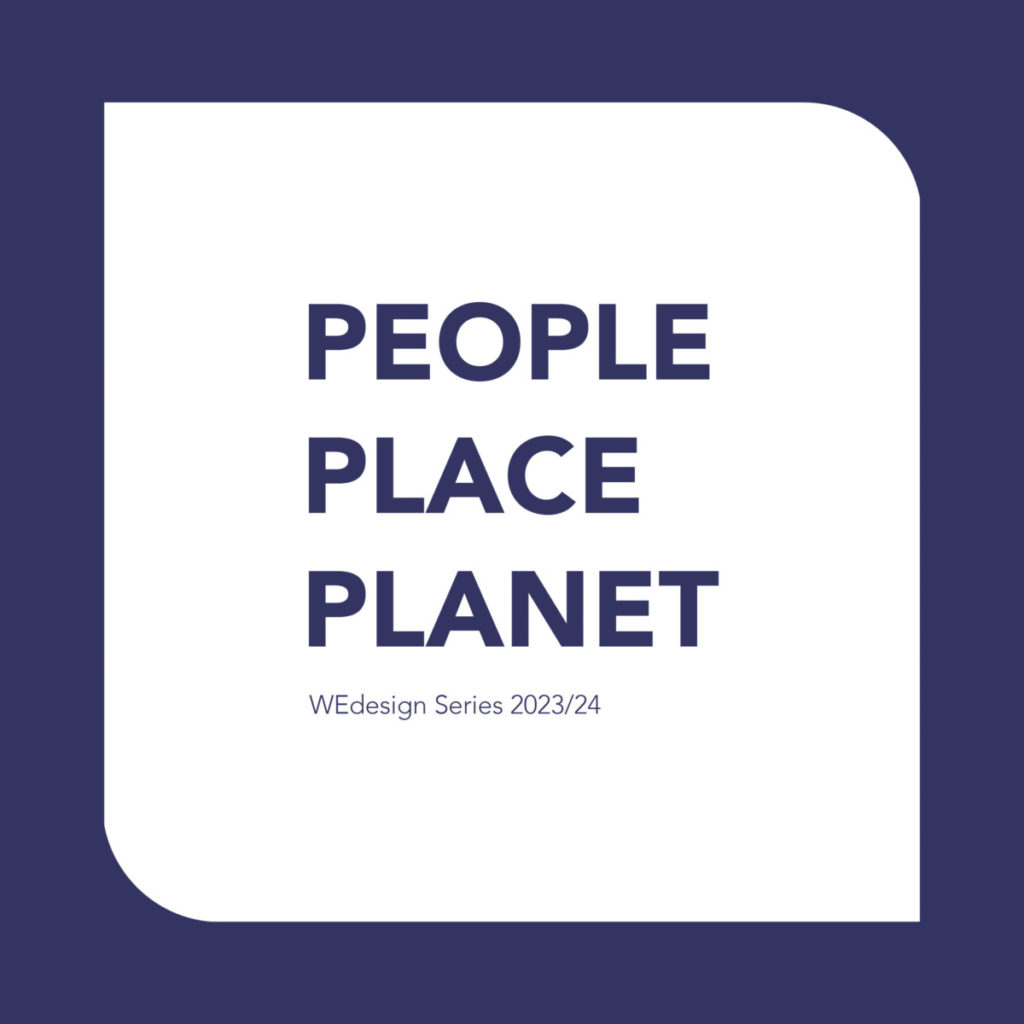Written by:
People, Place, Planet: Think Pieces, are a series of online blogs which will take our event series theme as a starting point and will offer an external voice and provocation.
In our the second of our People, Place, Planet: Think Pieces Duncan Wilson, shares his thoughts and ideas about the theme through the lens of heritage and the power of repurposing.
We live in a throwaway society. New products have built in obsolescence, from mobile phones to cars. And there can be a similar attitude to buildings, such as commercial office blocks. The narrative runs like this: the client will only take “category A” carbon neutral office space, and it’s too expensive or difficult to bring old offices up to this spec, so we will have to demolish and build new.
There are two flaws in that argument – embodied carbon and the role that heritage plays in fostering pride; it really matters to people. The problem is that the carbon involved in building new, with high embodied-energy materials such as steel and glass, together with the carbon wasted and released by demolition, can vastly outweigh the carbon saved by a zero-carbon building over its lifetime. Defaulting to demolition also ignores the part that historic buildings play in bringing character to places and connecting with the communities that love them. Recycling is not a new concept. My parents, belonging to the immediate post-war generation, were reluctant to throw anything away or replace it. We should apply the same logic to buildings as the greenest building is the one that already exists. Far too many repurposable buildings, such as many of the former mills of northern England, are demolished to make way for new housing of questionable quality when they could have been converted into apartments. Market economics may be stacked against retention and conversion, but when social value, historic character and placemaking are factored in, the picture is reversed. This approach actually supports growth, a form of sustainable growth allied to social value. When historic buildings disappear, people feel their loss.

We have calculated that we need 205,000 skilled workers every year in England from now until 2050 (double the current workforce) to “upcycle” existing historic buildings by retro-fitting them to make them more energy efficient and carbon-neutral. England has the largest percentage of historic buildings in its overall residential building stock compared to the rest of Europe, so progress in this area could make a significant contribution to reducing our carbon footprint. Historic England is currently consulting on our advice note on the best ways to do this, both to maximise value for money and carbon saved, and to be sensitive to the need to protect historic character and features.
So carbon saving and local pride are very strong arguments for retaining and re-using historic buildings. But there are others which are equally strong. I am not particularly fond of the term “place-making”. It implies that places have to be made afresh. But many of our most valued places embody hundreds of years of history in their fabric. That is the core of their appeal. They represent the struggles and lifestyles of previous generations. The people are long gone, but the places remain to tell their stories, from rows of terraced housing for mill-workers, to country cottages for farm labourers, to grand houses, ruined abbeys and castles, to mighty cathedrals and mediaeval parish churches. Whole landscapes survive to tell their stories, and their historic features such as dry stone walls and ancient hedges contribute to their present day viability as farms by providing shelter and retaining thin upland soils. Historic features such as ancient down land hillforts also help species diversity, illustrating the point that the natural and historic environments march hand in hand.
We can still keep the best of what we have. We just need to see it as an opportunity, not a blockage. Yes, it needs more thought to keep it. But surely it is worth the effort.
Find out more:
About the Author
Duncan Wilson CBE

Duncan Wilson CBE joined Historic England as the organisation’s first Chief Executive on 1st April 2015.
Historic England is a public body which improves people’s lives by protecting and championing the historic environment.
Previously, Duncan was Chief Executive of the Alexandra Park and Palace Trust, developing a major regeneration and conservation scheme to restore the Victorian theatre and television studios. He has also been Chief Executive at the Greenwich Foundation for the Old Royal Naval College, maintaining one of Europe’s finest groups of baroque buildings, and the Somerset House Trust, opening the site to the public.
Duncan’s first job as a chartered accountant in 1987 was as Senior Management Accountant at English Heritage. Before accountancy he worked as a professional archaeologist in Oxford and Herefordshire, following post graduate research in European Archaeology.
He is a Trustee of Chatham Historic Dockyard Trust and the Greenwich Foundation.
He became a RIBA Honorary Fellow in 2022 and was awarded the CBE for services to heritage in 2023.
About the WEdesign 2023/24 Series: People, Place, Planet
People, Place, Planet is our theme for The Glass-House 2023/24 WEdesign series.
As we continue to shape our places, we are faced with the huge challenge of balancing our personal needs, the collective needs of our communities and those of our increasingly fragile planet.
This series will aim to identify and explore the opportunities and synergies that exist when we strive to balance people, place and planet in placemaking.
How can we think differently about how we shape our places? How can we collaborate more through design and placemaking to value and respect people, place and planet equally?
To find out more about the full 2023/24 series, visit our People, Place, Planet page on The Glass-House website.
WEdesign is The Glass-House’s annual series of free interactive public events, held online and in-person in cities across the UK, where we explore collaborative design in placemaking through discussion, debate and playful co-design activities.
To find out more about the WEdesign Programme, visit the WEdesign page on The Glass-House website.
WEdesign is supported by the Ove Arup Foundation.

